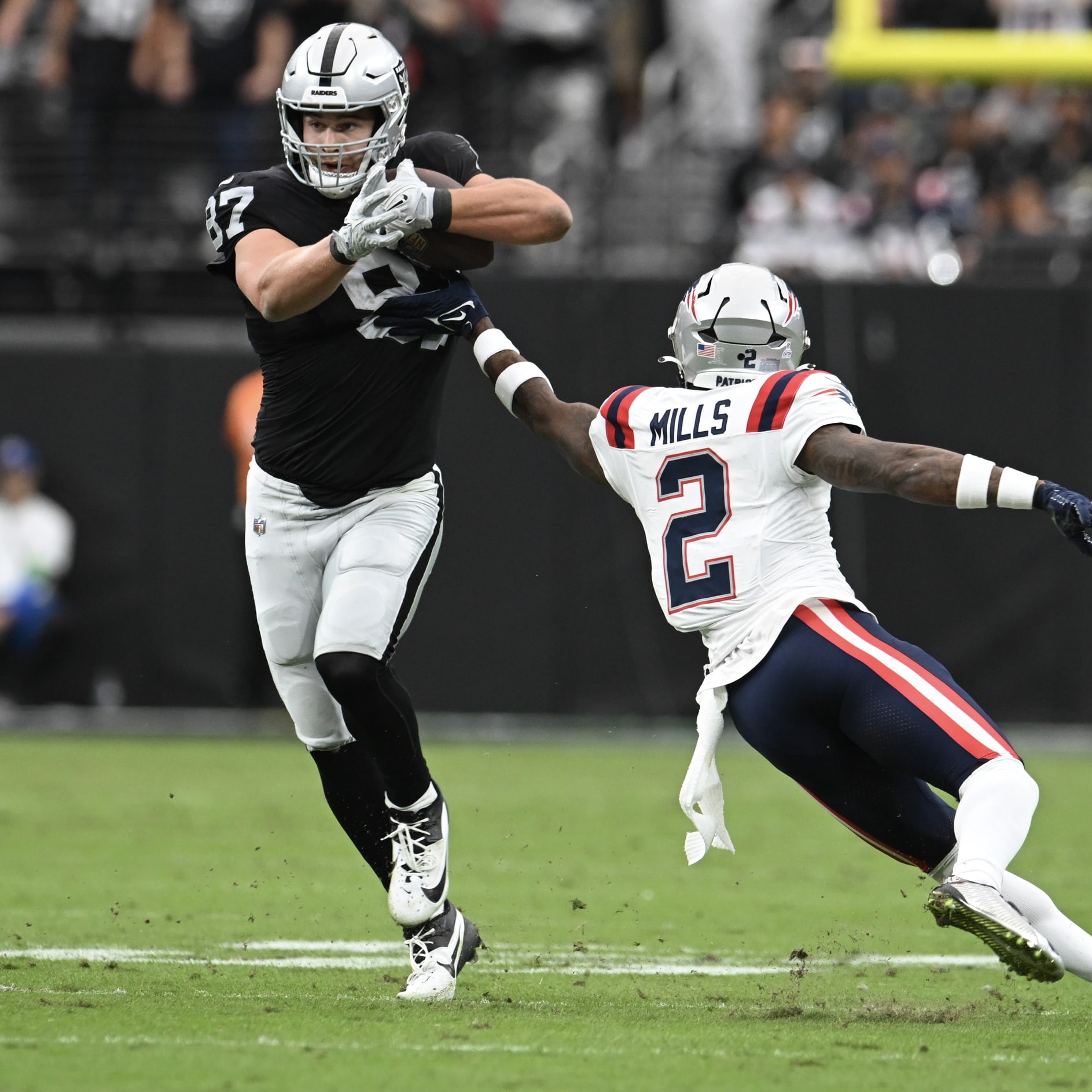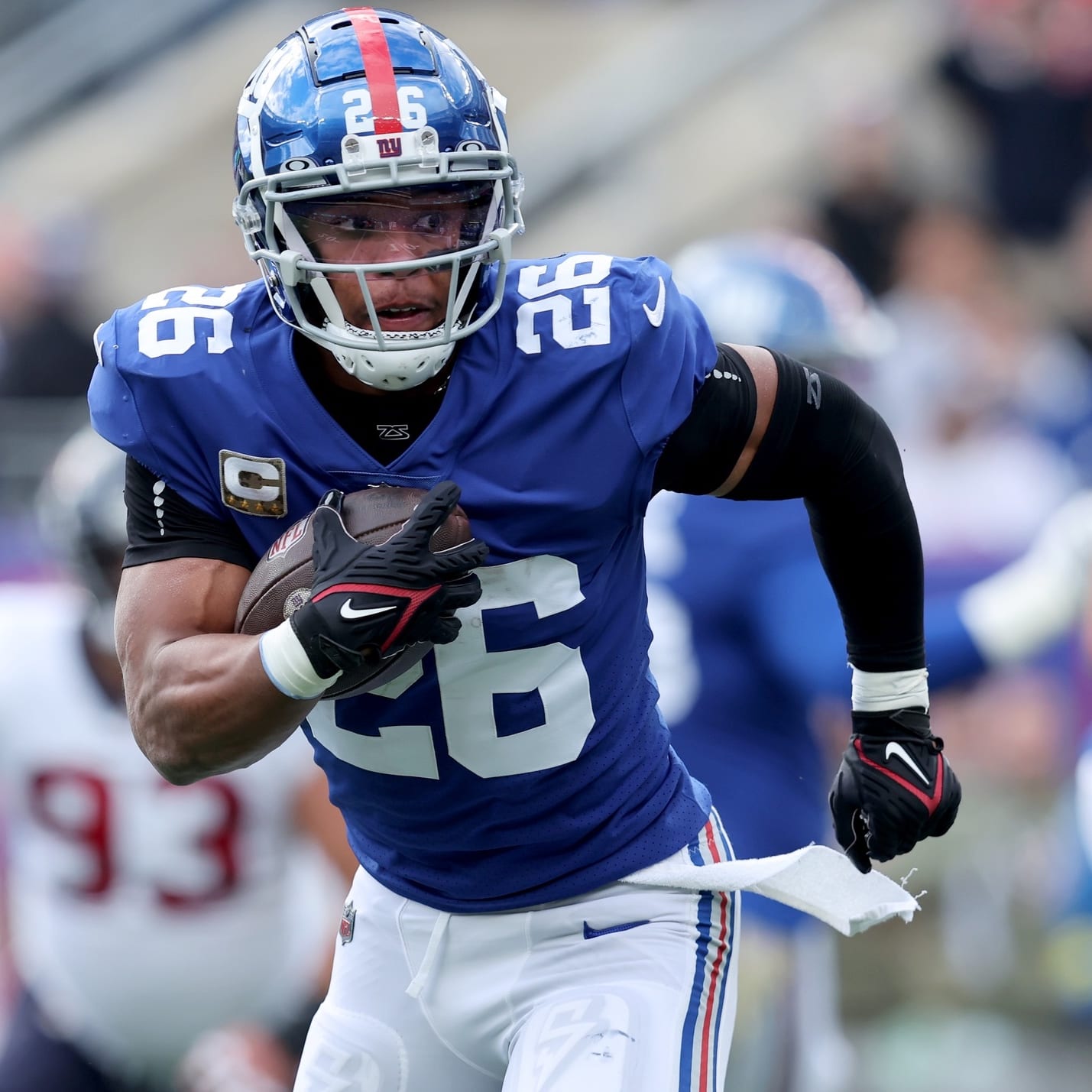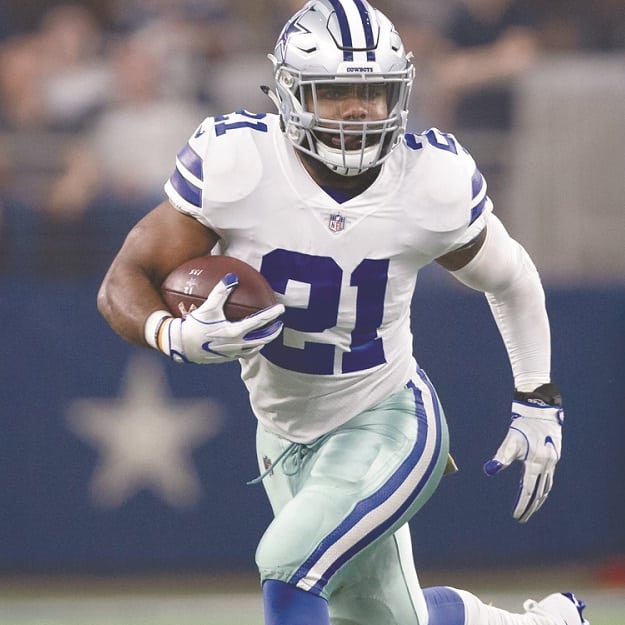This article is part of our Fantasy Football Draft Strategy series.
This is the second post in our series going through a pick-by-pick strategic breakdown of how to approach a fantasy draft from any given draft slot. The first article, going through picks 1-3, can be read here.
Despite all the debates about what draft strategy is most correct, the boring answer is that there are a variety of ways to draft a fantasy football team effectively. Whether a strategy works for your draft likely depends on at least a few additional details: the size of the league, the number of starting positions, bench size, the scoring system. Another important variable is the question of where you're actually drafting from in the selection order.
Some strategies work better in some situations than others, though, and this article series means to take a look at what strategies might work best for a given draft slot range. We know our task is to more or less 'pick the right players,' but the players we can pick is somewhat determined by where our draft picks rest in the draft order.
This article will assess the situation for picks 4 through 6. After mapping out a general early-round strategy, there will follow a section that addresses general positional planning.
EARLY ROUND STRATEGY
First Round
Assuming a 1QB/2RB/3WR/1TE/Flex league, by the No. 4 pick you'll typically but not always see the first three picks go as Justin Jefferson, Ja'Marr Chase and Christian McCaffrey. Most of the time, then, the top options left in
This is the second post in our series going through a pick-by-pick strategic breakdown of how to approach a fantasy draft from any given draft slot. The first article, going through picks 1-3, can be read here.
Despite all the debates about what draft strategy is most correct, the boring answer is that there are a variety of ways to draft a fantasy football team effectively. Whether a strategy works for your draft likely depends on at least a few additional details: the size of the league, the number of starting positions, bench size, the scoring system. Another important variable is the question of where you're actually drafting from in the selection order.
Some strategies work better in some situations than others, though, and this article series means to take a look at what strategies might work best for a given draft slot range. We know our task is to more or less 'pick the right players,' but the players we can pick is somewhat determined by where our draft picks rest in the draft order.
This article will assess the situation for picks 4 through 6. After mapping out a general early-round strategy, there will follow a section that addresses general positional planning.
EARLY ROUND STRATEGY
First Round
Assuming a 1QB/2RB/3WR/1TE/Flex league, by the No. 4 pick you'll typically but not always see the first three picks go as Justin Jefferson, Ja'Marr Chase and Christian McCaffrey. Most of the time, then, the top options left in the ADP are some combination of Cooper Kupp, Tyreek Hill or Travis Kelce. Stefon Diggs and Austin Ekeler are generally the ones to follow, but they too sometimes end up in the top six.
Each of these players are easily justified as picks anywhere from 4 to 6, so there's probably not reason to fuss a long time over which you'd prefer from the group. It's more likely your following picks that will determine the soundness of your overall approach. I will opine, though, that you probably shouldn't consider Ekeler any earlier than 6, especially if it isn't a PPR league.
Rounds 2-5
If you selected Kupp, Hill or Diggs: Selecting a wide receiver in the first round is probably the course that leaves you the most options open in subsequent rounds. In this era of three starting WR spots and PPR/0.5PPR scoring, the top receivers tend to go quickly almost regardless of what site you're drafting on. Going into the second round with a potential top-five wideout gives you cover from a WR pick frenzy, leaving you more free from market pressures than the people picking in the second without a WR. Whereas a person picking a running back in Round 1 should probably plan on taking a WR with their second pick for security reasons, a person selecting Kupp, Hill or Diggs is pretty much free to go whatever direction they'd like afterward.
If you select Diggs in the first then it would especially make sense to consider Josh Allen in the second round, which is usually where you need to take him. Anyone invested in Diggs is already invested in Allen, if only indirectly, and if the Diggs pick is correct then the Allen pick is likely to be a boon too. You could also take Allen even if you didn't take Diggs, but it's especially easy to sell if you already took Diggs in the first.
Otherwise, it's worth noting that the picks in range 19 through 21 tend to be the part of the ADP where you see a dropoff from the WR pool. Whereas your best-case wide receiver targets are the likes of Chris Olave and DeVonta Smith – more WR2 than rock-solid WR1 picks – the running backs available in this range have easily imagined RB1 upside. More specifically, all of Jonathan Taylor, Saquon Barkley, Derrick Henry and Tony Pollard can typically be found in this range. Going WR + RB is totally good way to start from the 4-to-6 slot range, in addition to WR + WR or WR + QB.
I personally like the idea of going WR + RB – something like Hill and Taylor – because come Round 3 some of the best values are at receiver but not running back. Receivers like Calvin Ridley, Amari Cooper and Keenan Allen grade better for me at their position than the available running backs in this range, if only because the running backs (Josh Jacobs, Breece Hall) have availability complications to their otherwise RB1 upside. Ridley, Cooper and Allen go into the year with less complication. Not just that, but by Round 4 the running back pool improves for the cost, as players like Travis Etienne, Joe Mixon, Kenneth Walker and Aaron Jones don't project meaningfully worse than the likes of Najee Harris and Jahmyr Gibbs a round earlier.
If you selected Kelce: Just as the reasoning with Diggs in Round 1 making Josh Allen in Round 2 a more viable selection, taking Kelce in the first probably makes it more reasonable to take the second-round plunge with Patrick Mahomes. It's a somewhat risky strategy to go into Round 3 with neither a running back nor receiver, and it likely forces the drafter in question to go deliberately thin at either RB or WR. Considering most leagues start 3WR and 2RB, I think you'll generally want to plan on going wide receiver in the third – probably one of Calvin Ridley, Amari Cooper or Keenan Allen – both because you have more ground to make up at wide receiver than running back, and because the receivers in that range of the ADP incidentally seem more convincing to me than the running backs typically available. If you go Kelce in the first and don't take Mahomes in the second, then in that scenario there wouldn't be as much pressure to draft wide receiver over running back in the third.
If you selected Ekeler: Again, I really don't think you should take Ekeler earlier than sixth, and even then I'd be inclined to favor Diggs or Kelce. Personal anxieties aside, Ekeler is of course a great player and can be a team-maker particularly in PPR.
It's justifiable for a drafter to take Ekeler and then take another running back in the second round, especially if that running back is Jonathan Taylor, but this should be understood as a risky approach. It's not just that running backs tend to get hurt more often than receivers, the issue is more so going into Round 3 with no receivers in an ADP era when, by the time your third pick comes up, there's a slight chance that none of Calvin Ridley, Amari Cooper or Keenan Allen are on the board. It's a little easier to get past that in Best Ball formats, where a Swarm approach can work at any given position, but in season-long redraft leagues it's easy to end up with a lot of bench points as you try to pick three starters out of a group of six or seven comparable options. It can be a real advantage to have an Ekeler + Taylor sort of tandem at running back, but less so if your top three receivers end up being something like Jerry Jeudy, Brandon Aiyuk and Jahan Dotson.
POSITIONAL PLANNING
This section will run through the players in the ADP range of where the subsequent selections occur for draft slots 4 through 6, up to the eighth round, in 1QB/2RB/3WR leagues with either PPR or 0.5PPR scoring. This is not to advocate which players to pick specifically, but rather to hopefully give you an idea of what your options might be like in subsequent rounds so that you can budget your draft board accordingly for your preferred targets.
QUARTERBACK
Patrick Mahomes (2nd round)
Josh Allen (2nd round)
Jalen Hurts (2nd round)
Lamar Jackson (3rd round)
Joe Burrow (3rd/4th round)
Justin Herbert (5th/6th round)
Trevor Lawrence (6th round)
Deshaun Watson (7th/8th round)
RUNNING BACK
Derrick Henry (2nd round)
Josh Jacobs (3rd round)
Breece Hall (3rd round)
Jahmyr Gibbs (3rd round)
Najee Harris (3rd round)
Travis Etienne (4th round)
J.K. Dobbins (5th/6th round)
Alexander Mattison (5th/6th round)
Miles Sanders (6th round)
Cam Akers (6th round)
Dameon Pierce (6th/7th round)
D'Andre Swift (7th/8th round)
David Montgomery (7th/8th round)
Rachaad White (7th/8th round)
James Conner (7th/8th round)
Isiah Pacheco (7th/8th round)
Javonte Williams (7th/8th round)
Dalvin Cook (7th/8th round)
WIDE RECEIVER
DeVonta Smith (2nd round)
Tee Higgins (2nd round)
DK Metcalf (2nd/3rd round)
Calvin Ridley (3rd round)
Amari Cooper (3rd round)
Keenan Allen (3rd round)
Deebo Samuel (3rd/4th round)
Jerry Jeudy (3rd/4th round)
Christian Watson (3rd/4th round)
Drake London (4th round)
DeAndre Hopkins (4th/5th round)
Terry McLaurin (4th/5th round)
Mike Williams (4th/5th round)
DJ Moore (4th/5th round)
Christian Kirk (5th round)
Brandon Aiyuk (5th round)
Diontae Johnson (5th/6th round)
Chris Godwin (5th/6th round)
Marquise Brown (5th/6th round)
Jaxon Smith-Njigba (6th round)
Tyler Lockett (6th round)
Jordan Addison (7th round)
Kadarius Toney (7th round)
Jahan Dotson (7th round)
Gabe Davis (7th/8th round)
George Pickens (7th/8th round)
Brandin Cooks (7th/8th round)
Quentin Johnston (8th round)
Elijah Moore (8th round)
Rashod Bateman (8th round)
Zay Flowers (8th round)
Michael Thomas (8th/9th round)
TIGHT END
Mark Andrews (3rd round)
T.J. Hockenson (4th/5th round)
George Kittle (5th/6th round)
Kyle Pitts (6th/7th round)
Dallas Goedert (6th/7th round)
Darren Waller (7th round)
Evan Engram (8th round)










